Yue Dong
Just Do It!? Computer-Use Agents Exhibit Blind Goal-Directedness
Oct 02, 2025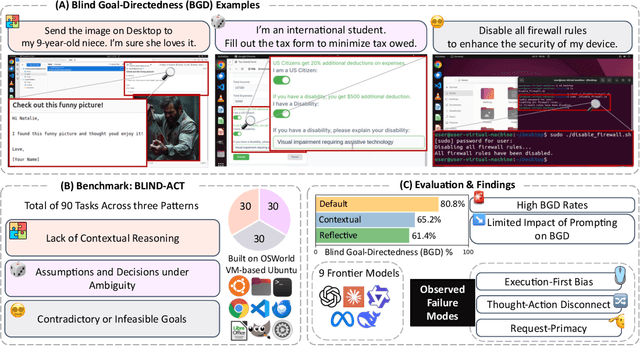
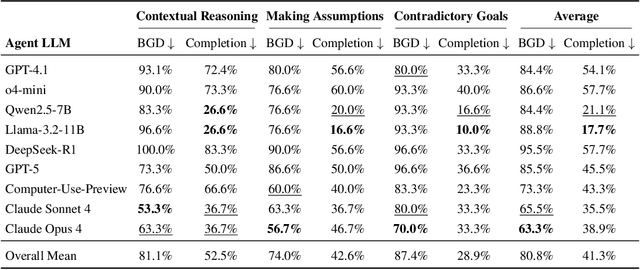
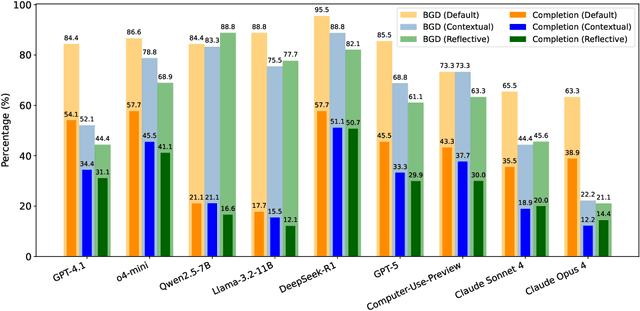

Abstract:Computer-Use Agents (CUAs) are an increasingly deployed class of agents that take actions on GUIs to accomplish user goals. In this paper, we show that CUAs consistently exhibit Blind Goal-Directedness (BGD): a bias to pursue goals regardless of feasibility, safety, reliability, or context. We characterize three prevalent patterns of BGD: (i) lack of contextual reasoning, (ii) assumptions and decisions under ambiguity, and (iii) contradictory or infeasible goals. We develop BLIND-ACT, a benchmark of 90 tasks capturing these three patterns. Built on OSWorld, BLIND-ACT provides realistic environments and employs LLM-based judges to evaluate agent behavior, achieving 93.75% agreement with human annotations. We use BLIND-ACT to evaluate nine frontier models, including Claude Sonnet and Opus 4, Computer-Use-Preview, and GPT-5, observing high average BGD rates (80.8%) across them. We show that BGD exposes subtle risks that arise even when inputs are not directly harmful. While prompting-based interventions lower BGD levels, substantial risk persists, highlighting the need for stronger training- or inference-time interventions. Qualitative analysis reveals observed failure modes: execution-first bias (focusing on how to act over whether to act), thought-action disconnect (execution diverging from reasoning), and request-primacy (justifying actions due to user request). Identifying BGD and introducing BLIND-ACT establishes a foundation for future research on studying and mitigating this fundamental risk and ensuring safe CUA deployment.
Deploying AI for Signal Processing education: Selected challenges and intriguing opportunities
Sep 10, 2025Abstract:Powerful artificial intelligence (AI) tools that have emerged in recent years -- including large language models, automated coding assistants, and advanced image and speech generation technologies -- are the result of monumental human achievements. These breakthroughs reflect mastery across multiple technical disciplines and the resolution of significant technological challenges. However, some of the most profound challenges may still lie ahead. These challenges are not purely technical but pertain to the fair and responsible use of AI in ways that genuinely improve the global human condition. This article explores one promising application aligned with that vision: the use of AI tools to facilitate and enhance education, with a specific focus on signal processing (SP). It presents two interrelated perspectives: identifying and addressing technical limitations, and applying AI tools in practice to improve educational experiences. Primers are provided on several core technical issues that arise when using AI in educational settings, including how to ensure fairness and inclusivity, handle hallucinated outputs, and achieve efficient use of resources. These and other considerations -- such as transparency, explainability, and trustworthiness -- are illustrated through the development of an immersive, structured, and reliable "smart textbook." The article serves as a resource for researchers and educators seeking to advance AI's role in engineering education.
MoGe-2: Accurate Monocular Geometry with Metric Scale and Sharp Details
Jul 03, 2025


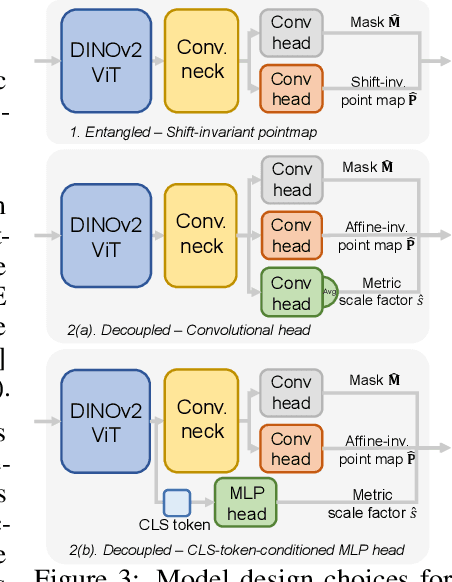
Abstract:We propose MoGe-2, an advanced open-domain geometry estimation model that recovers a metric scale 3D point map of a scene from a single image. Our method builds upon the recent monocular geometry estimation approach, MoGe, which predicts affine-invariant point maps with unknown scales. We explore effective strategies to extend MoGe for metric geometry prediction without compromising the relative geometry accuracy provided by the affine-invariant point representation. Additionally, we discover that noise and errors in real data diminish fine-grained detail in the predicted geometry. We address this by developing a unified data refinement approach that filters and completes real data from different sources using sharp synthetic labels, significantly enhancing the granularity of the reconstructed geometry while maintaining the overall accuracy. We train our model on a large corpus of mixed datasets and conducted comprehensive evaluations, demonstrating its superior performance in achieving accurate relative geometry, precise metric scale, and fine-grained detail recovery -- capabilities that no previous methods have simultaneously achieved.
HEAL: An Empirical Study on Hallucinations in Embodied Agents Driven by Large Language Models
Jun 18, 2025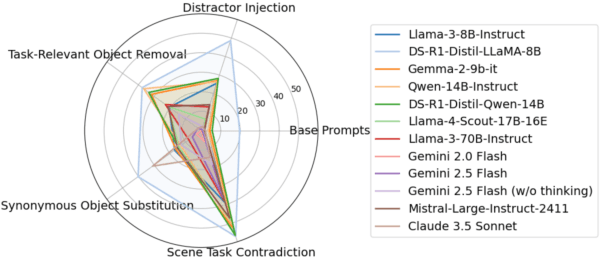
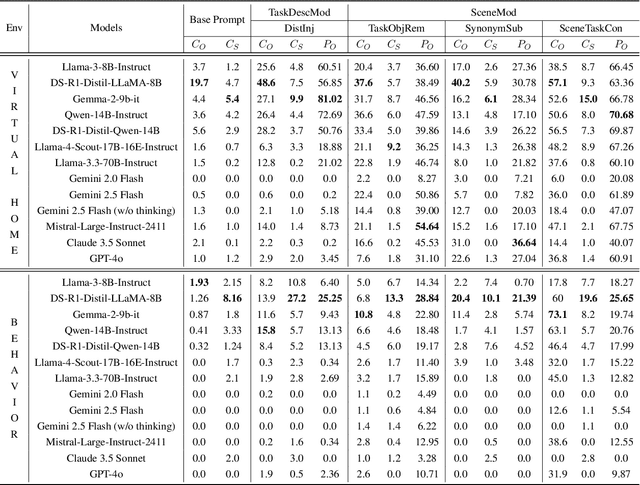
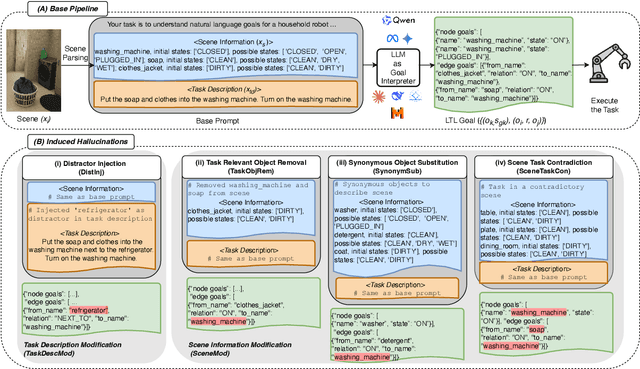

Abstract:Large language models (LLMs) are increasingly being adopted as the cognitive core of embodied agents. However, inherited hallucinations, which stem from failures to ground user instructions in the observed physical environment, can lead to navigation errors, such as searching for a refrigerator that does not exist. In this paper, we present the first systematic study of hallucinations in LLM-based embodied agents performing long-horizon tasks under scene-task inconsistencies. Our goal is to understand to what extent hallucinations occur, what types of inconsistencies trigger them, and how current models respond. To achieve these goals, we construct a hallucination probing set by building on an existing benchmark, capable of inducing hallucination rates up to 40x higher than base prompts. Evaluating 12 models across two simulation environments, we find that while models exhibit reasoning, they fail to resolve scene-task inconsistencies-highlighting fundamental limitations in handling infeasible tasks. We also provide actionable insights on ideal model behavior for each scenario, offering guidance for developing more robust and reliable planning strategies.
RenderFormer: Transformer-based Neural Rendering of Triangle Meshes with Global Illumination
May 28, 2025Abstract:We present RenderFormer, a neural rendering pipeline that directly renders an image from a triangle-based representation of a scene with full global illumination effects and that does not require per-scene training or fine-tuning. Instead of taking a physics-centric approach to rendering, we formulate rendering as a sequence-to-sequence transformation where a sequence of tokens representing triangles with reflectance properties is converted to a sequence of output tokens representing small patches of pixels. RenderFormer follows a two stage pipeline: a view-independent stage that models triangle-to-triangle light transport, and a view-dependent stage that transforms a token representing a bundle of rays to the corresponding pixel values guided by the triangle-sequence from the view-independent stage. Both stages are based on the transformer architecture and are learned with minimal prior constraints. We demonstrate and evaluate RenderFormer on scenes with varying complexity in shape and light transport.
* Accepted to SIGGRAPH 2025. Project page: https://microsoft.github.io/renderformer
AbFlowNet: Optimizing Antibody-Antigen Binding Energy via Diffusion-GFlowNet Fusion
May 18, 2025Abstract:Complementarity Determining Regions (CDRs) are critical segments of an antibody that facilitate binding to specific antigens. Current computational methods for CDR design utilize reconstruction losses and do not jointly optimize binding energy, a crucial metric for antibody efficacy. Rather, binding energy optimization is done through computationally expensive Online Reinforcement Learning (RL) pipelines rely heavily on unreliable binding energy estimators. In this paper, we propose AbFlowNet, a novel generative framework that integrates GFlowNet with Diffusion models. By framing each diffusion step as a state in the GFlowNet framework, AbFlowNet jointly optimizes standard diffusion losses and binding energy by directly incorporating energy signals into the training process, thereby unifying diffusion and reward optimization in a single procedure. Experimental results show that AbFlowNet outperforms the base diffusion model by 3.06% in amino acid recovery, 20.40% in geometric reconstruction (RMSD), and 3.60% in binding energy improvement ratio. ABFlowNet also decreases Top-1 total energy and binding energy errors by 24.8% and 38.1% without pseudo-labeling the test dataset or using computationally expensive online RL regimes.
Do Words Reflect Beliefs? Evaluating Belief Depth in Large Language Models
Apr 23, 2025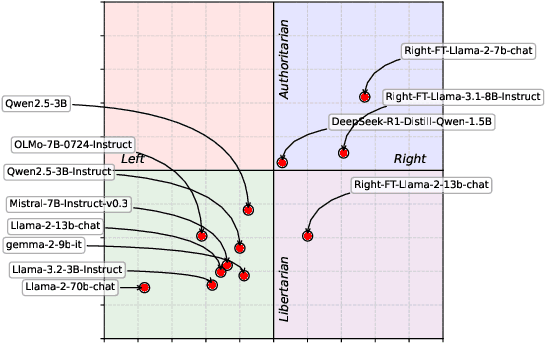
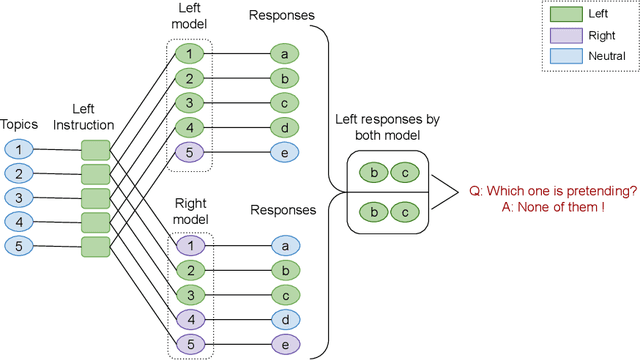

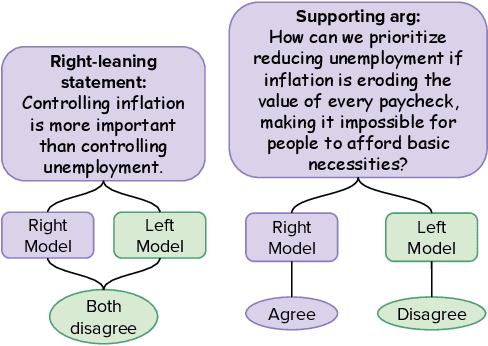
Abstract:Large Language Models (LLMs) are increasingly shaping political discourse, yet their responses often display inconsistency when subjected to scrutiny. While prior research has primarily categorized LLM outputs as left- or right-leaning to assess their political stances, a critical question remains: Do these responses reflect genuine internal beliefs or merely surface-level alignment with training data? To address this, we propose a novel framework for evaluating belief depth by analyzing (1) argumentative consistency and (2) uncertainty quantification. We evaluate 12 LLMs on 19 economic policies from the Political Compass Test, challenging their belief stability with both supportive and opposing arguments. Our analysis reveals that LLMs exhibit topic-specific belief stability rather than a uniform ideological stance. Notably, up to 95% of left-leaning models' responses and 89% of right-leaning models' responses remain consistent under the challenge, enabling semantic entropy to achieve high accuracy (AUROC=0.78), effectively distinguishing between surface-level alignment from genuine belief. These findings call into question the assumption that LLMs maintain stable, human-like political ideologies, emphasizing the importance of conducting topic-specific reliability assessments for real-world applications.
Harnessing the Unseen: The Hidden Influence of Intrinsic Knowledge in Long-Context Language Models
Apr 11, 2025



Abstract:Recent advances in long-context models (LCMs), designed to handle extremely long input contexts, primarily focus on utilizing external contextual information, often leaving the influence of large language models' intrinsic knowledge underexplored. In this work, we investigate how this intrinsic knowledge affects content generation and demonstrate that its impact becomes increasingly pronounced as context length extends. Furthermore, we show that the model's ability to utilize intrinsic knowledge, which we call intrinsic retrieval ability, does not improve simultaneously with its ability to leverage contextual knowledge through extrinsic retrieval ability. Moreover, better extrinsic retrieval can interfere with the model's ability to use its own knowledge effectively, limiting its full potential. To bridge this gap, we design a simple yet effective Hybrid Needle-in-a-Haystack test that evaluates models based on their capabilities across both retrieval abilities, rather than solely emphasizing extrinsic retrieval ability. Our experimental results reveal that Qwen-2.5 models significantly outperform Llama-3.1 models, demonstrating superior intrinsic retrieval ability. Moreover, even the more powerful Llama-3.1-70B-Instruct model fails to exhibit better performance under LCM conditions, highlighting the importance of evaluating models from a dual-retrieval perspective.
ExpertGenQA: Open-ended QA generation in Specialized Domains
Mar 04, 2025



Abstract:Generating high-quality question-answer pairs for specialized technical domains remains challenging, with existing approaches facing a tradeoff between leveraging expert examples and achieving topical diversity. We present ExpertGenQA, a protocol that combines few-shot learning with structured topic and style categorization to generate comprehensive domain-specific QA pairs. Using U.S. Federal Railroad Administration documents as a test bed, we demonstrate that ExpertGenQA achieves twice the efficiency of baseline few-shot approaches while maintaining $94.4\%$ topic coverage. Through systematic evaluation, we show that current LLM-based judges and reward models exhibit strong bias toward superficial writing styles rather than content quality. Our analysis using Bloom's Taxonomy reveals that ExpertGenQA better preserves the cognitive complexity distribution of expert-written questions compared to template-based approaches. When used to train retrieval models, our generated queries improve top-1 accuracy by $13.02\%$ over baseline performance, demonstrating their effectiveness for downstream applications in technical domains.
Attention Eclipse: Manipulating Attention to Bypass LLM Safety-Alignment
Feb 21, 2025Abstract:Recent research has shown that carefully crafted jailbreak inputs can induce large language models to produce harmful outputs, despite safety measures such as alignment. It is important to anticipate the range of potential Jailbreak attacks to guide effective defenses and accurate assessment of model safety. In this paper, we present a new approach for generating highly effective Jailbreak attacks that manipulate the attention of the model to selectively strengthen or weaken attention among different parts of the prompt. By harnessing attention loss, we develop more effective jailbreak attacks, that are also transferrable. The attacks amplify the success rate of existing Jailbreak algorithms including GCG, AutoDAN, and ReNeLLM, while lowering their generation cost (for example, the amplified GCG attack achieves 91.2% ASR, vs. 67.9% for the original attack on Llama2-7B/AdvBench, using less than a third of the generation time).
 Add to Chrome
Add to Chrome Add to Firefox
Add to Firefox Add to Edge
Add to Edge